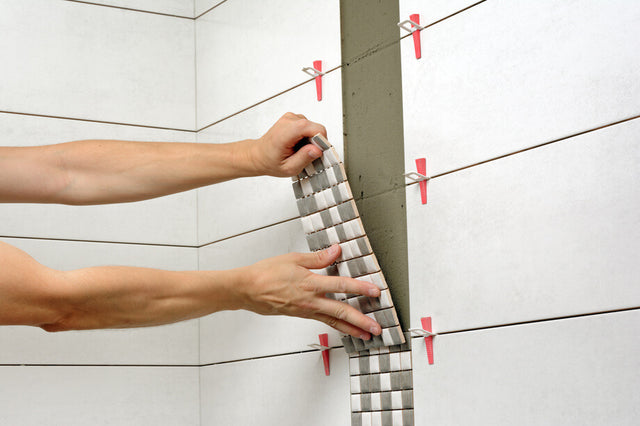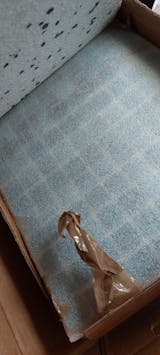Tile laying for beginners: what mistakes should not be made?
Prepare the surface for the tiles - the first step towards success
The first phase, although often underestimated, of any ceramic tile installation project is the proper preparation of the substrate. Whether you are building a new space or modernizing an existing one, ensuring a level surface is a key aspect to pay attention to. This is important because insufficient preparation of the substrate can lead to numerous inconveniences, such as crooked lines, cracks, or warping, which can compromise the aesthetics and functionality of the installed ceramic tiles.
An adequate preparation of the substrate includes several key activities that can significantly increase the chances of success. The first is, of course, to ensure that the surface is clean, dry, and free of irregularities. Use appropriate tools, such as a spatula or a level, to achieve a uniform surface. The next step is to use a suitable mortar or adhesive that not only ensures the adhesion of the tiles but also protects the substrate from moisture. The appropriate work pace is also important, as laying the tiles too quickly can lead to mistakes, while too slowly can cause premature drying of the adhesive. Proper preparation of the substrate is an extremely important aspect for the durability and aesthetics of the installed ceramic tiles. So keep these guidelines in mind as you consider your next tiling job!
Choose the right tile adhesive: the foundation for a lasting installation
Choosing the right tile adhesive is another fundamental element in the installation process. The durability and aesthetics of the entire installation largely depend on the correct selection of the glue. When choosing this product, you should pay attention to several key factors:
- Type of tiles: not all tiles are the same. Their material and structural diversity requires a different selection of adhesive. For example, glass tiles have different requirements compared to ceramic or porcelain tiles.
- Terms of use: When choosing the adhesive, the location where the tiles will be laid is also important. Whether it's a humid bathroom or a warm kitchen, each place has its specific expectations.
- Adhesive strength: the durability of the tiling requires high expectations regarding the strength of the adhesive. The stronger it is, the longer it will keep the tiles in place.
Choosing the right tile adhesive is an extremely important task and is responsible for the durability and aesthetics of the entire installation. A well-selected adhesive ensures that the tiles withstand even the most difficult conditions, maintaining their impeccable appearance for a long time. Remember that the time spent on the correct selection of the glue is an investment in the long-term satisfaction of the final result.
Cutting methods for tiles: how to avoid cracks and save material?
The tile cutting methods are a key element that influences the final effect of your project. Properly executing this process is extremely important to minimize the risk of material breakage and optimize its use. There are various tools for cutting tiles, each of which is useful in different ways. Starting from simple tile scissors, through professional knives with diamond blades, to advanced cutting machines, the choice of tool should depend on the type of tile, its thickness, and the shape we want to achieve.
Equally important are the principles of material optimization in tile cutting. Preparing an accurate plan for this process will allow for the precise use of each tile and minimize waste. Choose the most optimal solution for your project and apply it. Remember, excessive pressure on the cutting tool can lead to tile breakage, so always try to work with care and precision. By applying these rules, you will not only save material but also ensure that the tiles are cut correctly, maintaining their impeccable appearance.
Tile laying - techniques and laying patterns for an aesthetic finish
The installation of tiles is a process that requires not only adequate preparation of the substrate and selection of materials but also skill and precision in execution. The key is to use the appropriate installation technique that will allow for an aesthetic and durable finish. The first step is to apply the adhesive to the previously prepared surface. It is important to remember that the application must be uniform to ensure maximum adhesion of the tile to the substrate.
Subsequently, we move on to the actual laying phase of the tiles. In this case, the laying patterns are particularly important because they determine the final appearance of our surface. The choice of layout depends on personal preferences, but regardless of that, we should always strive to maintain uniform spacing between the tiles and pay attention to their symmetry. A properly chosen laying pattern directly translates into the aesthetics of the final finish. Laying the tiles according to the established pattern and using the appropriate technique guarantees a satisfactory final result that will please the eye for many years.
The plastering as an essential finishing element - practical tips
Grouting is an integral part of the tile installation process, which requires a lot of attention and appropriate skills. One tip for perfect grouting is to use the appropriate grout. The types of these materials are different, and their choice depends on the width of the joint, the color of the tile, and, above all, the location where they will be used. Joints for humid environments, such as bathrooms, should be characterized by greater resistance to moisture and mold. For surfaces exposed to high temperatures, such as the kitchen, a mortar with greater resistance to extreme temperatures is used.
The grouting technique requires precision. We start by applying the grout, spreading it evenly over the surface of the tiles, paying particular attention to filling the gaps between them. Next, use a special rubber scraper to remove the excess material, then clean the surface of the tiles with a clean, damp sponge. This is essential for achieving smooth and even joints. It is also important to allow the mortar to dry properly, which will contribute to its durability. Remember, a well-executed grouting aesthetically completes any tile laying project and ensures its long-term use.








0 Comments
There are no comments for this article. Be the first one to leave a message!